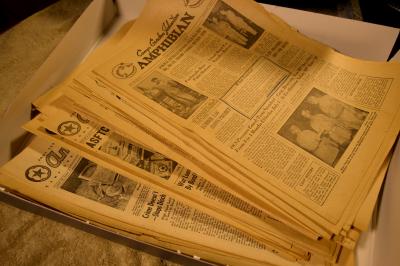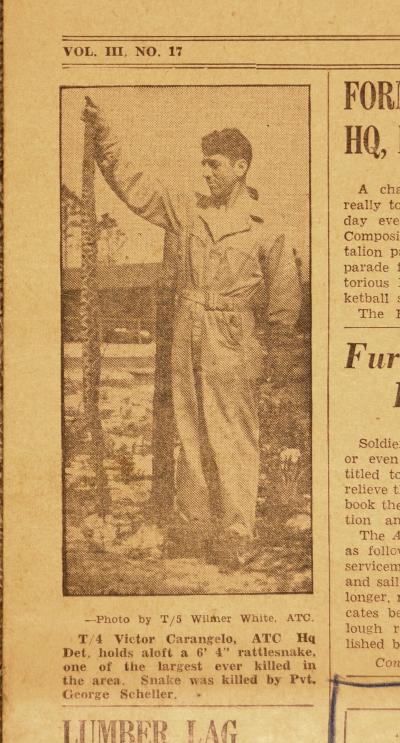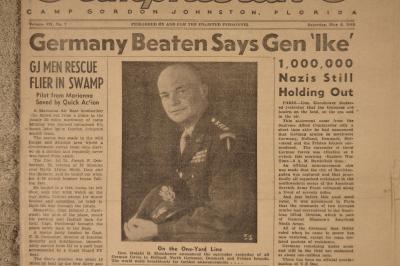Florida’s panhandle Gulf Coast is one of the top destinations for young people during Spring Break. It was also a top destination for young people during World War II, or young men at least, and not for partying.
Courtesy Camp Gordon Johnston Museum
Between 1942 and 1946 a quarter of a million men passed through Camp Gordon Johnston in the tiny fishing village of Carrabelle, about 60 miles south of Tallahassee. The 160 thousand acre spread was miles from anywhere, had cold winters and sweltering summers, only the roughest of temporary amenities, swamps, gators, snakes, thunderstorms and beaches. Those beaches were perfect... for learning how to invade enemy held islands and the continent of Europe.
Courtesy Camp Gordon Johnston Museum
Most men were there for a few months of preliminary training on amphibious assault techniques, but one who stayed longer was Major Francis Blankinship from Oklahoma, the post engineer, the second in command of the camp.
One keepsake of his 30-plus months “at the edge of nowhere” was the press run of the camp’s weekly newspaper, the Amphibian, which he presented to the Florida Historical Society in 1966 and is now preserved at the Library of Florida History in Cocoa.
The papers show the range of topics of interest to the G.I.’s,
F rom the 6 foot 4 inch rattlesnake dispatched by an alert Pvt.,
to the good word on the war in Europe from ‘Ike’. Note that story shares the front page with a rescue story showing just how untamed the area was.
That Ike story was likely also of interest to the thousands of German POW’s who were also confined at Camp Johnston. They were not the only isolated group in camp; thousands of African American soldiers were there, too, in a segregated Army. One hundred sixty thousand acres may sound like a big area, but when you subtracted the swamps and forests, it was crowded. Camp leaders had to protect soldiers from the wildlife, the elements, and each other.
Shortly After the war many buildings, facilities and the land were sold as war surplus. Officer’s houses later became the retirement community of Lanark Village, now an unincorporated community in Franklin County located along Rt. 98 East of Carrabelle. Many of the original houses remain in use.
The Camp Gordon Johnston WW II Museum (https://www.campgordonjohnston.com/) displays lots of images and items from the camp. At this writing the museum is moving into new quarters and hopes to open for visitors during the summer of 2018.
Blankenship’s collection includes letters he wrote home. He said in one that after 30 months he had gotten used to the Florida weather, but he did not think he could settle here after the war. He did go back to Oklahoma, but in 1966 he was living in Lakeland, FL when he donated the memories to the FHS.












